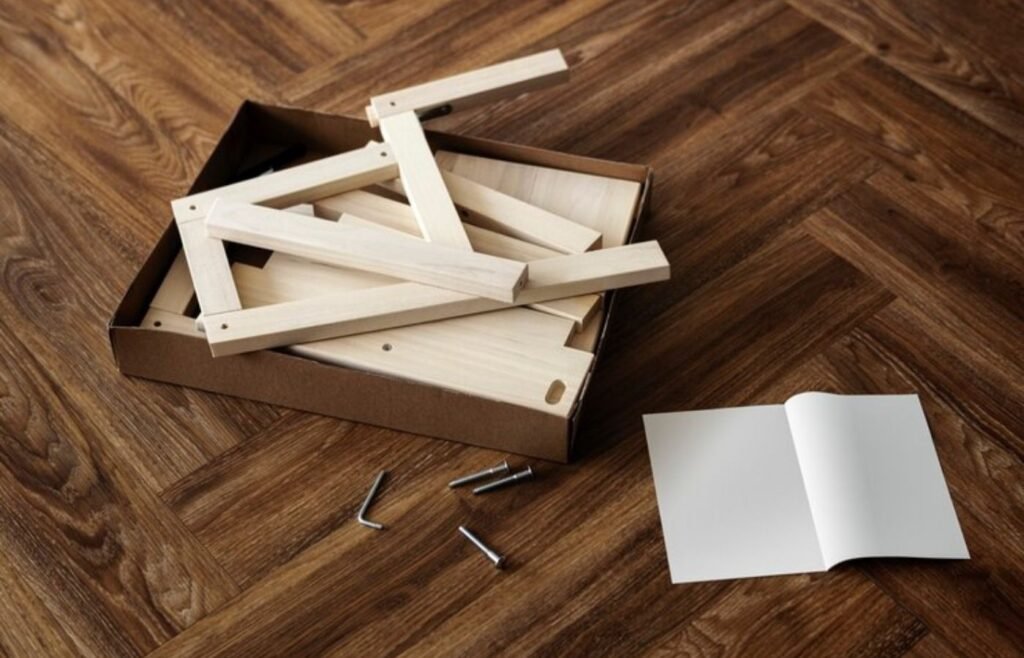Have you ever walked into a room filled with furniture, but it felt empty? Selecting the right types of furniture and how it’s arranged can add life to your space. It can also make your home easier to navigate if everything is in its proper place.
To avoid making sure mistakes when selecting furniture and arranging it, read this article for tips on making the most of the space you have. We’ll talk about what pieces you should buy, how big they should be, and how much furniture you should include in each room.
No matter which style of decorating you choose, from modern or traditional to eclectic or country-inspired – Furniture selection and arrangement plays a huge role in creating the atmosphere of any home.
Consider the room’s purpose
When arranging furniture, it’s important to consider the purpose of the room. Are you setting it up for relaxing and entertaining, or is it more focused on productivity?
For rooms that are solely for entertainment and relaxation, opt for larger pieces of furniture and create an open floor plan. Larger pieces create a cozy ambiance that encourages conversation. On the other hand, if you want your room to be productive, choose smaller furniture to save space and cultivate an efficient work atmosphere.
Think about how people use the room in order to decide what type of furniture to buy: most sitting rooms should have a couch with accompanying armchairs and end tables; home offices may require something like a comfortable but practical desk chair; and bedrooms often come with beds along with nightstands, dressers vanities, etc.
No matter which room you are working with, pay attention to both its function as well as form when selecting furniture items so you can find optimized office solutions.
Measure the space
Measuring the space is an essential step for choosing and arranging furniture. Failing to do this could lead you to choose furniture that doesn’t fit in the room or leave too much empty space.
So don’t skip this step! Measure the length, width, and height of your room (or the area you’ll be filling with furniture) so you know exactly how much space you have to work with.
This might help you decide if you want one large piece of furniture or several smaller ones. Or it will tell you that standard-sized furniture won’t fit where you wanted it, so custom sizing would be required instead.
Measurement will also help you determine where to place each piece of furniture. You’ll also need enough room to flow gracefully around the furniture, rather than having to tightly squeeze past it every time.
Think about traffic flow
When it comes to furnishing your house, you must think about traffic flow. The cardinal rule is to never block any entrances or exits in the room!
It’s also important to consider how people will move around a space. Keep an eye on the paths that people naturally take such as walking from one side of the room to another, or pathways into and out of doorways.
Planning ahead for traffic flow can help make your home look larger and more inviting. Plan where furniture will occupy a space by measuring items accurately and defining areas clearly with rugs, dividers, and other design elements.
You want to create a seamless transition between different parts of the room while also making sure there’s enough open space so people don’t struggle to find a route through your home.
Balance the room
To achieve balance and harmony in a room, you have to consider how each piece of furniture and accessories interact. You don’t necessarily have to match everything, but should be aware of the size and colors that best compliment each other.
Balance is all about creating harmony throughout the room so that it looks visually pleasing. To do this, use colors, shapes and textures in a way that they relate to one another while having their own distinct personalities.
Think of how colors can draw your eye in different directions or how two pieces of furniture can work together without dominating each other’s space. You’ll need to experiment with sizes, heights and materials as well to find what works best for the room.
Make sure you move furniture around every once in awhile. Balance isn’t something that has to remain static; introducing small changes can make a huge difference in the atmosphere of any given room!
Create focal points
Creating focal points is an excellent way to bring energy and contrast to your furniture layout. When you create a focal point in a room, your eye will automatically be drawn to that area.
Choose pieces that contrast in shape, size, texture and color when creating focal points. You could combine a round ottoman with square coffee table or a plush couch with unique arm chairs for an intriguing combination.
Creating an intentional focal point also helps draw attention away from any design flaws in the space. For example, if you have an awkwardly placed window, create a bold furniture arrangement around it as a distraction.
Focal points can help set the tone for the entire room and act as the starting point for creating a finished look. If done right, it can help make all of your design elements come together into one cohesive style!
Combine function and style
When it comes to furnishing your home, you want the right combination of function and style. Otherwise, you’ll waste time and money trying to find that special piece that looks good but isn’t comfortable or practical.
That’s why it’s important to make sure every piece of furniture you select serves both a functional and decorative purpose. Find pieces that fit perfectly in the room and are also comfortable enough for people to sit in or lie down on.
Choose colors, shapes and textures that will pull together the visual elements of the room without overpowering it! You can even use fabrics, paintings or rugs to add interest to the space without cluttering up the walls with extra furniture.
When shopping for furniture, keep in mind your lifestyle needs as well as your pre-existing décor preferences. That way every piece will have true purpose both aesthetically and functionally!
Play with color
Color is a powerful decorating tool for selecting the perfect furniture for your space. It can set the tone of a room and bring everything together in stylish cohesion.
Mixing and matching colors can be tricky but once you get the hang of it, you’ll have no problem introducing shades, hues, and tints into your furniture selection.
Play with monochromatic color schemes to create a polished look or opt for rainbow-inspired vibrancy to make a bold statement.
Just remember to use neutrals like whites and greys as anchors that will balance out any brightly colored furniture you choose. You could also accentuate your design by adding colorful accents like paintings or vases!
Add texture
If you’re looking for ways to add texture when selecting furniture, try using a variety of materials. Look for pieces in different fabrics like cotton, velvet or leather, and combine different hardwoods or metals in your furnishings.
Texture is an amazing way to make a room stand out! By adding pops of color and patterns in unexpected places, you can create visual interest that will draw the eye.
For example, if you have an all-wood dining table, consider pairing it with chairs upholstered in bright colored fabric for a unique look. Or alternate between light-colored wood and darker wood pieces for a classic feel. And don’t forget to accessorize – mix and match pillows and textiles to further add depth to your furniture selection!
Personalize
When it comes to furniture selection, comfort should always be your primary concern. But that doesn’t mean you can’t inject personal style into the equation.
Personalizing your furniture means creating a unique look and feel with pieces you love. Remember, when it comes to adding personality to your home, there’s no right or wrong way.
Think of it as thematic decorating! Start cooking through Pinterest boards or flipping through specialty magazines for inspiring ideas and color pallets that reflect your personality.
You can also create accents in your home on a budget by repurposing items like using old windows as shelves, hanging rustic signs on bare walls, incorporating macramé plant holders and so much more. Be sure to explore all the ways you can add charm to your space in an affordable way!
Bottom Line
Choosing the right furniture and arranging it correctly can completely transform any living space. From creating cozy seating nooks to picking out contemporary styles, your choices will set the tone for the entire room.
Keep these tips in mind when you’re shopping for and arranging furniture and let your creative side shine through. With a bit of thoughtfulness and creativity, you’ll be able to make your house feel like a home.













